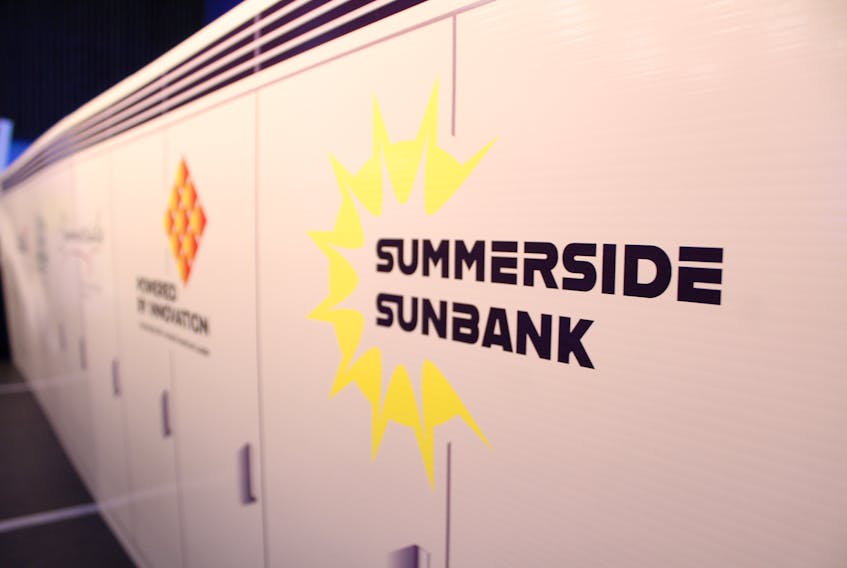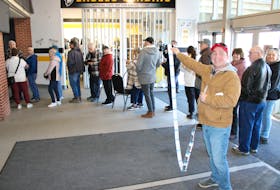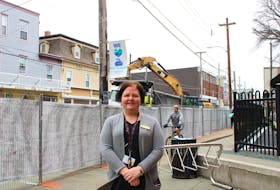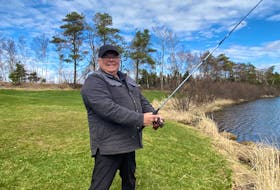SUMMERSIDE, P.E.I. — Summerside is taking a page from the Icarus playbook and betting heavily on reaching for the sun.
The city has partnered with the federal and provincial governments, as well as international company Samsung Renewable Energy, to build a $69-million, 21-megawatt solar power farm, with an attached 20-megewatt hour capacity battery system.
But what does that mean in a practical sense for city taxpayers?
The Journal Pioneer decided to take a closer look at exactly what was announced Tuesday afternoon.
How did we get here?
In 2017 Summerside and Samsung Renewable Energy signed a memorandum of understanding on a three-phase energy project.

City representatives and the company had been introduced a year earlier during a Canada and South Korea trade event in Ottawa.
Phase 1 of the plan called for a proof of concept project.
Credit Union Place was prime candidate because of, among other factors, its large annual electric bill, about $380,000 per year at that time, and the availability of nearby space.
The two parties announced the project in early 2017. It cost $3 million, split between the city and the Atlantic Canada Opportunities Agency, and consists of 1,548 solar panels and a battery. The project was touted as a way to decrease the facility’s electric bill by about $100,000 per year.
The overall Summerside/Samsung REC project went quiet for a while as there were federal, provincial and municipal elections in the interim, changing many of the political players.That system was brought online in mid-2017.
However, someone managed to keep the project alive and moving forward.
Phase 2, dubbed the Summerside Sunbank, was announced.
Greg Gaudet, Summerside’s director of municipal services, said the Credit Union solar/battery system was really the first step towards the 21-megawatt project announced this week.
“We’ve had a good two years and a little bit operating the system. So now we’re well vetted in the technical limitations and the operation capabilities of that smaller system, so now we can apply that to a much larger and much more costly system, which we feel much more comfortable investing in,” said Gaudet.
Phase 3 of the agreement would involve the expansion of Summerside’s smart electrical grid through some as yet unannounced projects.
What’s next?
The Phase 2 solar farm will be installed on about 80-acres of land already owned by the city, off Route 11 near the border with Linkletter. The land is the home of the city’s newest freshwater wellfield and is protected from most other kinds of development. The batteries will be located just off the wellfield land as an environmental precaution.
In terms of scale, the new project consists of 65,000 solar panels and eight tractor-trailer sized batteries.
Construction is expected to start this spring and take 18 to 24 months to complete. The city estimates construction will employ about 200 people.
Catherine McKenna, federal minister of Infrastructure and Communities, congratulated Summerside Tuesday on its leadership on this project.
“Really what you’re doing is transformative,
“This shows how a city of 15,000 people can be a model for an innovate, cleaner, more sustainable and more prosperous future looks like. We often talk about the environment and the economy going hand-in-hand and this is exactly what you are showing to the world.”
How will Summerside Sunbank integrate into the system?
Summerside Electric, the city-owned electric utility, has a diverse portfolio in terms of energy generation, including multiple power purchase contracts, local wind and diesel energy generation, artificial intelligence and now solar and industrial-scale batteries as well.
Summerside Electric currently buys power from the privately held West Cape wind farm, and from New Brunswick Power via the undersea power cables connecting P.E.I. to the mainland.
Summerside’s 12-megawatt wind farm saves the city a lot of money annually by cutting down significantly on the amount of power the utility has to buy from other sources.
Summerside Sunbank will act in much the same way and the city expects lessen the amount of power it buys from outside sources by about $2 million per year.
Between the power purchased from the West Cape Wind farm and its own solar and wind generation sources, Summerside expects to fulfill more than 60 per cent of its energy needs directly from renewable green sources.
The battery portion of Summerside Sunbank will connect directly into Summerside’s grid and will have a few different uses – the most important of which will be to give the utility more control over its electrical resources.
“Basically, a solar farm is a solar farm, is a solar farm. In other words, the sun shines and it generates electricity. It’s pretty benign and you can’t really control it that well. The battery storage portion of the project is to help the utility manage the flow of electricity and where it’s going and how it’s used,” said Gaudet.
Right now, when Summerside’s wind turbines produce more power than the grid needs, that energy is sold on the market for a relatively cheap price. But with the batteries, the utility can store that cheap excess power and use it when demand rises and it would otherwise have to buy expensive power from the market. Savings are expected to top about $2 million per year.
The batteries will be fully integrated into the city’s electrical system, added Gaudet. So it’s a sunny day and the solar farm is producing more power than the city needs at that moment, then it can shunt its excess into the battery. Similarly, extra power from the wind turbines can also be stored for later use.
The idea is for the batteries to be charged and discharged at least once per day, said Gaudet, which gives them an operational lifespan of about 10 years before they will need to be refurbished.
Who pays?
- Project budget: $68.79 million
- Federal contribution: $26.3 million
- Provincial contribution: $21.9 million
- Samsung technical investment: $3.02 million
- City direct funding: $6.01 million
- City financed contribution: $11.5 million
RELATED: Summerside building $68 million solar power farm and battery system









